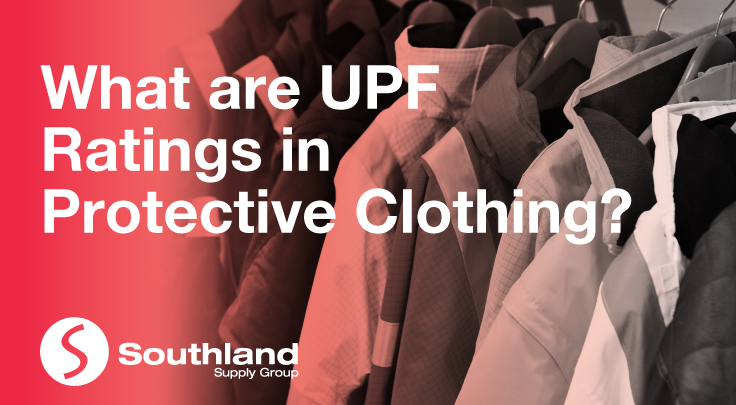
Ultraviolet Protection Factor or UPF determines how much protection from ultraviolet light is provided by a piece of fabric. In short, Ultraviolet Protection Factor (UPF) indicates how much UV radiation (both UVB and UVA) reaches your skin through the fabric.
Whether you are only occasionally working in the sun, or spending the whole day outdoors, having safety workwear that protects you from the sun’s harmful UV rays is extremely important. UPF protective or Sun protective clothing and workwear keep UV radiation from hitting your skin, helping protect it from sunburn and the after-effects of prolonged sun exposure such as premature wrinkles, sunspots, or cancer.
What does the UPF rating mean?
The UPF rating shows how well the material blocks ultraviolet radiation from the sun, also known as solar ultraviolet radiation (UVR). The higher the UPF rating, the more solar UVR gets blocked by the material and the less exposure to solar UVR your skin will receive. The 2020 version of the Australian standard for sun protective clothing has three UPF classifications depending on the amount of solar UVR blocked. Each UPF classification has corresponding UPF ratings:
- 15 - Minimum protection
- 30 - Good protection
- 50, 50+ - Excellent protection
What is the sun protective clothing standard about?
The Australian/New Zealand Standard Sun protective clothing—Evaluation and classification (AS/NZS 4399) was first introduced in 1996. The standard provides guidance for manufacturers and suppliers on communicating the sun protection properties of materials to consumers by the use of a protection classification and an Ultraviolet Protection Factor (UPF) rating. UPF ratings are found on labels for swimwear, safety workwear, school wear, and outdoor wear to assist consumers in selecting products that provide the best sun protection.
In 2017, the standard was revised to simplify the UPF rating system and to introduce body coverage information. In 2020, the standard was further revised to update the body coverage and labeling information and is now an Australian standard, and is no longer a joint standard with Standards New Zealand
Fabrics that provide better protection include:
- Specially manufactured fabrics for sun protection
- Blue or black denim jeans
- Merino wool garments
- 100% polyester
- Shiny polyester blends
- Satin-finish silk of any weight
- Tightly woven fabrics
- Unbleached cotton
Fabrics that provide poor protection include:
- Polyester crepe
- Bleached cotton
- Viscose
- Knits, especially loosely woven
- Undyed, white denim jeans
- Threadbare, worn fabric.
Sun protection shouldn’t stop at sunscreen. UPF-protective workwear provides another level of sun protection to keep you covered while you are in the sun. Be sure to opt for clothing with dense, bright or dark colored fabric, a loose fit, and long sleeves when possible. Check out Southland’s line of safety workwear with UPF protection or give us a call for more information on UPF-protective clothing and workwear. Get in touch with us 1800 77 22 91 / webstore@southland.com.au
